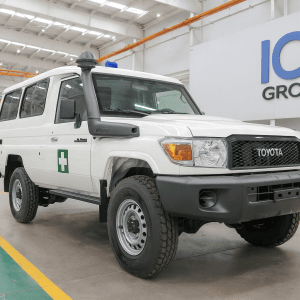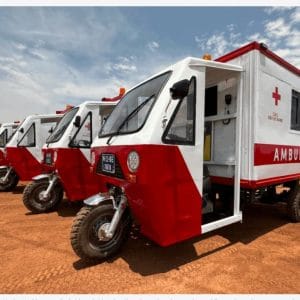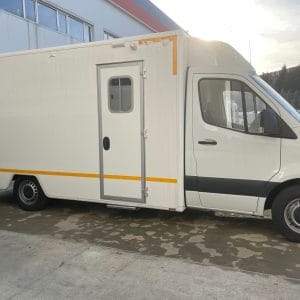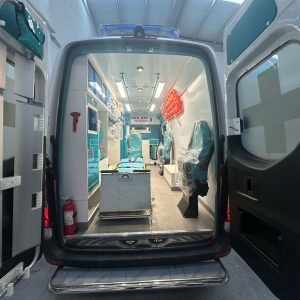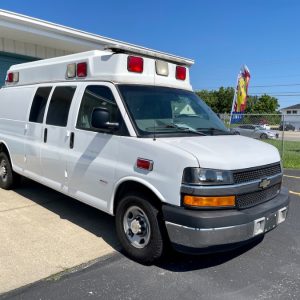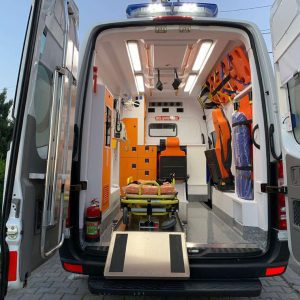1. Introduction to Cash-in-Transit Vehicles
Cash-in-transit vehicles serve the purpose of ensuring the secure transportation of huge sums of money between clients and banks and vice versa. They are an essential part of the cash cycle supply chain and hold significance for both the logistics industry and the security industry. Apart from cash, CIT vehicles are also used in the transportation of high-value items such as gold, jewelry, and documents. Primarily, cash-in-transit vehicles rely on physical deterrence for their security and safety. Their mere presence should deter criminals and potential thieves. All CIT vehicles carry out deliveries and pickups throughout the day, and their safes are gradually filled with cash. In terms of attributes, cash-in-transit vehicles are usually vans that resemble armored vehicles and come in all standard sizes, both in length and in width.
Some of the areas where CIT vehicles are used may have restrictions in terms of the size of the vehicle, traffic, or requirements for spending long hours on the road. The vehicles used in these areas do not carry as much cash and are usually smaller in size. The CIT vehicles have to be designed with several technology and security factors in mind to provide the right level of protection, carrying capacity, secure locking systems, tagging systems, driver security, and so on. Cash-in-transit or armored cars have long served as an indispensable investment for bank transport operations and cash-in-transit operations. Ranging in variety from trucks to vans, the CIT vehicles are designed to carry cash, valuables, or equivalent documents safely and securely from one place to another, with a view to minimizing the chances of theft and robbery during operations. Since CIT vehicles are exclusively used for the transportation of cash and high-cost goods, they are required to comply strictly with national and international security norms.
1.1. Definition and Purpose
The term “cash-in-transit” vehicles refers to specialized vehicles designed to safely, securely, and efficiently transport cash and other valuables from locations of high transaction to secure cash centers, banks, and perhaps other distribution points. They are one of the integral components of logistics and cash management operations and are largely used for the secure handling of cash, transfer of bulk cash from retail and other organizations to cash processing centers, as well as for the distribution of cash and high-value goods like jewelry, precious metals, and stones. The primary purpose of these vehicles is to provide means for the movement of valuables without posing the associated risks to all stakeholders, which may arise if such goods are carried in non-specialized vehicles or as a part of public goods transportation. Such specialized vehicles offer dedicated mechanisms and technologies that can deter crime with the hopes of loss.
Cash-in-transit vehicles are designed with features like exceptional strength and resistance to assault; an alarm system that is directly linked with a security service provider, which is otherwise an independent system; shape and size to offer the functionality of their load, which excludes any restriction with respect to minimum size; vehicle power and driving performance to support handling according to anticipated crime and road conditions, as well as to ensure timely delivery; a design structure that may look like a private vehicle, without compromising the legislation, otherwise attracting undue attention; driver access to the passenger compartment only through an integral metal security quad to prevent ambush raids from behind; front-line compartments shielded with armoring with the ability to resist either heat or an explosive charge; separate load-carrying containers excluding only internal or container access while leaving prohibited exposed areas; tamper-proof fittings; the ability to secure the vehicle while stopped on an incline; and unique vehicle identification, to name a few. The criticality of such vehicles can be gauged from the industry sectors they are aiding, which include financial services, retail, and CIT companies. The most important of these is predominantly associated with security concerns. These vehicles not only deter direct cash theft from banks but also from personnel during transportation or agents with access to records. These are a few of the pivotal reasons due to which security has the utmost importance in these vehicles and is one of the main motivators of ongoing developments and advances in this industry.
1.2. Historical Overview
Cash-in-transit (CIT) vehicles have an interesting and non-linear history. They are often thought of as a response to America’s three big heist eras of the 1920s-40s, which included such outlaws as John Dillinger and George Machine Gun Kelly. During this time, major safety improvements were made to carrier-type cash trucks, many of which were involved in major heists. Around the time of the passage of federal minimum wage and maximum hour laws in 1938, armored car companies made an important change to a new kind of vehicle and crew design: they built specially designed armored cars that would remove the need for expensive and dangerous package handlers and tellers. These trucks had a smaller compartment forward for the teller, and the remainder of the truck body to the rear was occupied by a driver and sometimes also one or two armed guards. This is still the basic design of most of our armed trucks, except the cab has moved up to be next to the miles of unmarked and quick-drying concrete wall. In many other ways, too, much of the technology seen and used in modern armored trucks was developed from as early as the 1920s through the 1960s, and only later, well out of the era of the largest and most famous heists, were innovative ideas applied to the field. This side trip through history will therefore have meaning to those who had not much interest in our field or just came to study it through the lens of history that illuminate routes we, as an industry and a nation, can take. Overall, there have been relatively few and minor adjustments in armored truck design until, very recently, they are beginning to make better use of the advances that have been made in fields like information science, ergonomics, security, and control systems, the human sciences.
2. Design Innovations
The design innovations section is dedicated to improvements in the functionality and user experience of the new vehicles. The major focus here is the improvement of ergonomic and accessibility features of the CIT vehicles for operators. Accessibility features appear to be highly important as the number of people with disabilities increases, necessitating special equipment, as well as ensuring a wide range of operator profiles must be addressed. This, in turn, enhances the overall efficiency of vehicle operation. The development of the refitted crew compartment must be supported by the provision of suitable front doors that improve accessibility. A new design of stairway, alongside an extending entrance step, is under development to make the crew compartment accessible to those with restricted mobility and/or wearing full operator safety equipment.
The design of cash-in-transit vehicles spans two major development periods. The first, lasting maybe twenty years, served to develop advanced security features to fend off determined attempts to attack the vehicle doors, operational zone, and crew compartments. Crew cabins were designed to be separate from the vehicle driving space and, in many cases, to be separable from the cargo transport area. The aim of the present section is determined by the fact that doors and windows so far have only two functions. However, designers looking for new design solutions and having new possibilities may use windows or specialized hidden doors for new functions, such as incorporated pumps for firing an irritating liquid in the form of a “smokescreen.”
The design of the CIT vehicle crew seat, for example, first sets the comfort and inclusion power of the crew seat and its suspension with the necessary presence of side skirts, head and neck pad, and head protective aiming. The cumulative axial load on the top of the head of dummies is 0 to 3 kg. The value of the head acceleration can be registered and analyzed around the probability value, and the outcome of decreased numbers of historical reports of dummies with mild head trauma is reduced, indicating no injury to the cervical spine and neck. None of the neck forces had values exceeding the negative lower injury risk curves at the horizontal or vertical forces during the dummy tests and recorded sealed videos.
2.1. Ergonomics and Accessibility Cash-in-Transit
The design of cash-in-transit vehicles is influenced by the optimal ergonomics to be implemented in order to ensure comfort, safety, ease of movement, and efficiency of the operators in several working conditions. Ergonomics has to satisfy the operational, organizational, social, and environmental needs. The standards outline the four areas of ergonomics and suggest that operators’ needs are more important, and if they are met, often other performance measures are also optimized. For example, safety will be maximized, or the interface with the user, such as the controls, displays, and layout, will be optimized.
In the design of the vehicles, they occupy the best and most suitable place. The design of the vehicles is created to be efficient, ensuring that the user is comfortable performing heavy work. Particular attention in the design of the vehicle layout has been given to the arrangement of the different sectors in the secure module. The controls are designed in compliance with standards, with control arrangements inside the vehicle; the latter is not subjected to particular operators. The steering wheel, pedals, and gearshift knob can be electrically adjusted in distance and height on the dashboard. The display and the knobs that are frequently used make opening and closing the van doors and the secure module units and panels easier, and also well protected from vandalism. We have proposed a user-friendly, total-hood shaped grab handle to be mounted on the van, expandable on both the right and left sides. Operators must not have to worry about adjusting simple things. The obstructive compact space design operation of the vehicle’s powerrack guarantees free operation of the CIT. This is an ergonomic innovation that is unique to our CIT rapid loader. Access to the CIT loader and the vehicle should be easy and as comfortable as a chair or even computerization. The chock and back should not be at risk. It is possible for operators to load or subscribe on the vehicle as easily as possible; that is the thinking behind the design of the steps for the vehicles. The technical specifications of the steps ensure maximum comfort, security, and ease of use. Channels of the stairs are designed and equipped with a special floor for non-slip coating. A silicone structure provides excellent coverage and accessibility on the slippery surface of the stairs. A special non-slip coating is applied to the vehicle. A non-reflective steel corrugated rubber nose slip. Units of the vehicle are painted with adhesives. The boss and the steps are a blue silhouette of a border, easy to see in low light. To be more pronounced, features of the ladder of the vehicle include safety folding side locks and automatically folding steps capable of day and night designs, responding with a light procedure to open. The function of the truck quickly facilitates the process.
2.2. Weight Distribution and Vehicle Stability Cash-in-Transit
The heavy use of public roads by cash-in-transit vehicles indicates a need for vehicle stability and safety. Over the years, several specific design or technology innovations have targeted weight distribution, handling, and transverse vehicle stability, typically by dynamic control of braking or propulsion forces. Not overloading a vehicle and properly distributing the load inside the vehicle is already recognized by relevant standards, which provide measurable, manageable, and enforceable procedures to guarantee the appropriate handling of a cash-in-transit vehicle. Weight distribution plays a central role in defining the dynamic behavior of a cash-in-transit vehicle. The balance of a vehicle, represented by the load center of gravity and its height with respect to the roadway level, is also important when a vehicle must move through highly non-homogeneous environments, as typically found in urban areas.
Weight distribution is a key point because it governs the vehicle’s rolling behavior. When the center of mass is as low as possible, the vehicle reaches a higher initial and final roll amount before the wheels reach the maximum adhesion limit. When the adhesion is exceeded, the vehicle rolls up to the maximum value and the wheels leave the ground, leading to the vehicle overturning or rolling over. A lower center of mass therefore provides higher lateral stability to the vehicle. On the other hand, a lighter vehicle configuration leads to whirling instabilities, especially for narrow wheelbase vehicles. Reducing the overall height of the load will also produce a reduction in the frontal area, thus lowering the vehicle’s aerodynamic drag. Furthermore, new solutions are aimed at real-time weight management on a vehicle, primarily through systems for weighing and enforcing standards, and can provide an additional tool to guarantee adequate handling conditions for most customer scenarios. However, some technical regulations must be respected in each case, so these systems do not override vehicle regulations, but they represent an additional tool to guarantee compliance. Moreover, onboard systems that allow real-time monitoring of vehicle conditions for the optimal exploitation of cargo carrying capacity can reduce operating costs and improve vehicle management for end users.
A correct choice of the position of the center of mass and height is one of the crucial aspects in the design of a safe cash-in-transit vehicle. A new cash-in-transit vehicle model is developed by means of a numerical multibody approach. Different virtual prototypes have been designed and investigated through a driving dynamic on-road simulation scenario, which is based on the development of virtual routes reproducing typical customer conditions in terms of road roughness, speed, and driver behavior. These virtual prototypes have different weight distributions for each version, at an ascending mass step, up to the maximum vehicle mass. The safety of a cash-in-transit vehicle is one architectural design goal to reach the zero-victim paradigm even by the 2050 horizon. In particular, the modern cash-in-transit vehicle is unpowered, and its dynamics are mainly driven by airflow resistance and load carriage, aerodynamic performance, and weight distribution when moving on-road. Starting from current regulatory states and typical vehicle design solutions, in this part of the work, several virtual prototypes have been designed with different mass distributions and heights of the center of mass. In particular, the research work allows for identifying which combinations of weight and center of mass lead the vehicle behavior on the road out of the security thresholds. At the same time, the research work provides a first proof of compliance with national and international vehicle regulations for urban traffic.
3. Technology Advancements Cash-in-Transit
Many modern technologies are being integrated into cash-in-transit vehicles. Route optimization and vehicle fleet management are enhanced by GPS-based technology, which is also integrated into communication systems. Many intelligent communication systems can also be installed in a vehicle, integrated with the fleet management system. These allow new money transport mission instructions to be communicated in real-time, including the collection and deposit stops and the transportation routes. The communication between the vehicle and the operations center is interactive, which makes it possible for the money transporter to signal operations center staff about any incidents that take place, such as when a transporter decides to make an unscheduled stop or has been attacked, or in the event of a vehicle breakdown. By providing real-time communication to and from the vehicle, GPS and GSM communication systems can be used to improve transportation workflow and reduce response times in the case of an incident.
The usage of new technologies in vehicles has a direct impact on the safety of the cash and personnel in the vehicles. The use of technologies can also reduce the time taken to respond to incidents. Increasing situational awareness of the occupants in the vehicle, including the driver and the passengers, can improve the efficiency of the responses to incidents such as ambush, hijacking, theft of money, or kidnapping. Technologies can also be used to deter or delay an attack on the vehicle. Technologies used in the vehicle and the CIT activities could include a CAD system, GPS, GSM, RFID, DVR, digital radios, and biometrics that include facial recognition, thumbprint scanner, and eye scanner. RFID is also used on smart cards and at access points at sorting centers for access control, SAT phones, and tracker devices. Vehicles that are fitted with tracker devices provide a fixed signal to the control room where the vehicles are managed, which allows for monitoring in order to track the vehicle and send a panic signal in the event of a hijacking incident. These systems also include the power of the vehicle’s lighting and the vehicle’s door locking system. All the systems could be linked to a database that is used during a criminal investigation. Cybersecurity of the data, computer, and route planning system is also essential, as the modern-day cash-in-transit robbery is not only confined to an armed attack on the CIT vehicle but also involves accessing CIT’s electronic systems. This makes CIT staff more vulnerable, as the crew might be caught napping without having equipment to protect themselves. The trend is for modern CIT companies to train their staff to react in this situation and also evaluate their training by simulating such scenarios at regular intervals. By reviewing the case files, it is evident that the CIT staff are beaten, stopped, or even killed for access to their system. Criminals today are more interested in certain currencies or consignments, and armed robberies in this regard are declining. The attackers’ preferred modus operandi is to gain intelligence on the operational process of their selected targets and then either physically intercept the CIT vehicles at the time of offload or bribe the staff to change the original collection and deposit spots and times.
3.1. GPS Tracking and Route Optimization
Today it is hard to imagine any significant logistic solutions without GPS technologies enabling round-the-clock real-time location tracking. Consequently, the aim of transportation companies is to transport the cargo as fast and safely as possible from point A to point B. In the cash-in-transit industry, GPS technologies can bring huge savings in terms of efficient route management and reduce travel times, which is one of the most important factors that contribute to the overall success of the cash-in-transit industry. Over the last two decades, the evolution of digital technologies and the opportunities they present for the financial sector have brought about new ways of working across the globe. This is particularly true in the field of logistics, thanks to giant leaps in the digitalization of services.
Predictive analytics offers many opportunities when combined with GPS. Traffic prediction is one of the most valuable tools that is used to anticipate the increase in the number of vehicle hours of delay in traffic. Other features of GPS technologies are continuous tracking, i.e., proactive monitoring of every vehicle and person at risk, enabling global control accessible from anywhere, and it helps to optimize route management. Of course, some limitations still exist about the accuracy of GPS applications, such as the so-called ‘urban canyon’ paradox where the signals are reflected from the tall buildings immediately and the exact location may be impossible for the insertion to occur in narrow alleys where the GPS signal cannot reach the receiver. It is indicated that, thanks to the developed transport technologies, it is no longer the vehicles themselves that are at the center of efficient road transport, but rather the content they transport. By checking the idea with an example, a decision was made to use the DynaBox solution, which can position the tracked vehicle with an accuracy of 3 m by utilizing the Galileo/GNSS satellite system. This was the crucial differentiator for the cash-in-transit operator that made the difference in the choice of solution.
3.2. Communication Systems
Technology to support communication between the CIT vehicle and the base, and also between the users on the base side, has recently made progress. Training of personnel to use a common communication system is surely a part of the advancement of technology. The first and perhaps the most important vehicle technology, which was considerably improved, affects the safety of the crew and the vehicles themselves. Cash-in-transit vehicles, on their day-to-day journey, support crew communication with the base via two-way radio systems. The radio communication was found to be vital for effective cash transport operations. Now, the data messaging signal could be sent using the mobile data terminal in the vehicle, checking if the load comprises the right consignment to create the knowledge of on-board particular vehicles. This enhanced security in two ways: monitoring whether the cash-in-transit vehicle goes the correct route and ensuring that the driver did not change the RFID tag on the load.
The role of the communication system has been increasingly recognized as a critically important contributor to secure and efficient day-to-day cash transport operations. This is clearly demonstrated by the substantial investment in the improvement of vehicles’ communication systems. The communication system of a CIT vehicle operates mainly between the vehicle and the dispatch center via satellite communication, as well as between various departments across the company. In designing communication systems, one would consider several communication options such as two-way radio, mobile data terminals, cellular phones, and telemetrics, utilizing different communication technologies such as voice, data, and image. The effective communication technologies could send and receive real-time information quickly to support crew operations, as well as to have a quick response in case of any emergency. In case the satellite communication could not be used, in-transit communication could be transmitted using alternative solutions to continue point-to-multipoint communication. All these operational features of the CIT vehicle technology are designed to transmit real-time information between the vehicle, the operations dispatch centers, the ATM originators, and the CIT selected employees. The training of appropriate personnel on the use of the modern two-way radio communication system is an important part of modern CIT operations.
4. Security Features Cash-in-Transit
Cash cars have to be as safe as possible against physical attacks focused on stealing the assets. Like the crew space, the cargo compartment is designed and built using armored materials and special reinforcements. Relatively thin layers should resist penetration during the attack and prevent them from entering the vehicle. Durable materials with minimal pebbles inside cause projectiles to disperse and reduce the overall effectiveness. Usually, the body, frame, doors, windows, and partitions are armored against such assets. Modern civil engineering glass is produced by layers of glass bonded together with plastic. It is used in both the armored screen that divides the crew space from the cargo compartment and the safety walls or bridges that protect the crew from materials in the cargo space. Of the many layers inside, only one may be made of conventional glass. The material is then put under very high tension to put the outer layers into a state of compression to make them strong. In case of an attack, the glass will fracture, but rather, the splinters will stay between the plastic longer, preventing the glass from falling off. An in-built alarm system can help deter criminals by providing a visual and audible alarm response within the cabin. In addition, vehicle alarm output signals can be incorporated with the branch alarm function, therefore informing the security officer as the event is happening. Each security door will be alarmed and, to ensure sufficient reporting points to help the monitoring teams properly, an array of sensors and switches will be installed. Cameras inside the vehicle will provide images of occupants to help make the drivers’ faces more distinct. Some of the cameras can also take regular snaps of the cargo area to ensure all assets are present and in good order. Biometric technology refers to the automated process of verifying or identifying a living person based on a physiological or behavioral characteristic. It is primarily used to check for single identity privileges or gain access to a platform, device, or location. All modern cash cars provide necessary features in security. Each feature is a reaction to the common industry-specific attacks in terms of experience, type of robbery, and criminal. The features detailed here must undergo continuous innovation and development to react to this shift of attacks, offering concrete solutions to prevent and combat the criminal activities in this industry.
4.1. Armored Materials and Reinforcements
The majority of the manufacturers employ heavy-duty armor material and reinforcing materials to enclose the CIT vehicles that are able to withstand ballistic impact as well as the aggressive assaults done by explosives, firearms, and mechanically using sharp and blunt instruments. In this text, we are critically scrutinizing the properties of the respective armor material specifically designed according to the possible kinds of threats. For structural components, the design typically complies with the standards of the truck industry. For CIT vehicle purposes, the enclosed part of the skeleton is designed to comply with the ballistic standards set by the defense industry counterpart. Various new materials have been investigated to provide enhanced performance, such as increased lightweight or improved protection properties. The armoring materials are still a very active research area. Inventing such a material to develop significantly better armoring from ballistic and forcible aspects is still in question.
Few practical case studies have shown that against heavy gunfire on the roof, the V-shape A-pillar successfully diverted the gunfire away from the driver and the CIT personnel, which resulted in the protection of those crew members. It can be interpreted here that the correct design for a certain side can actually minimize harmful effects during an attempted CIT vehicle robbery. However, the main issue is to obtain optimal protection without significantly reducing performance. The armoring weight should be optimal, as more weight can degrade vehicle handling, fuel economy, performance, and tire life. Hence, over-armoring of the vehicle, such as replacing the windows with a thick glass-based product, would absorb a good number of multiple shots, closed with ballistic authorizations. Over-armoring would not only diminish operational visibility but also effectively deaden the crucial aspect of human reaction, i.e., the driver usually seeks out potential hazards during daily operation. It should be mentioned here that there is ongoing research to invent more suitable armoring systems, where analytical and dynamic computational assessments of various types of designs in the form of vehicle modifications or global vehicle measures to contain higher levels of protection and high levels of threat. This kind of innovative thinking is also linked with research into inventing new materials and perhaps a proper hybridization of suitable alternatives to incorporate both structural and ballistic immunity along with allowable object penetration through the barrier.
4.2. Biometric Access Control Cash-in-Transit
The implementation of biometric access control systems is one option to guarantee secure vehicle access. Biometric characteristics, such as fingerprints or facial images, cannot be lost, duplicated, or forgotten, and therefore mitigate some of these risks caused by the traditional use of keys or access codes. With a biometric system, the access authorization is personally bound to the legitimate operator, which reduces the risk of unauthorized access to the vehicle. Furthermore, from the beginning of the access process, physical contact between the operator and the system can be reduced. This might help to reduce the transfer of biohazards, especially when using contactless arrangements such as facial recognition. In combination with the availability of secure communication channels, it may even be possible to carry out authorization requests to centralized systems in case of doubt, such as the involvement of a new operator. This would enable a level of capability that is higher than with the use of access cards or other identification verifiers. The use of a combination of biometric data, such as facial features and fingerprints, could enhance operational security.
Despite numerous security advantages, there are concerns with the use of biometric access control systems, such as requirements from a privacy protection and personal data security perspective. These concerns require careful consideration. Biometric systems developed for a vehicular environment are typically part of a complex operational environment, composed of various other security-related systems. Any protection chain is only as strong as its weakest link; so even if a system is resistant to biometric replay attacks, it remains vulnerable to other system types. Biometric systems are most effective if they are used in a layered security approach, combined with other types of biometrics and/or with non-biometric system and operational security measures. Many large car rental companies have extensively been using biometric systems to secure vehicle access in car-sharing communities at airports and in other applications. Biometric access control systems are successfully applied at various plants, where entry to restricted zones within the plant is secured.
5. Future Trends and Challenges Cash-in-Transit
The definite directions of future innovations are difficult to predict due to continuous technological advancements. The solutions presented draw on the technology available today, but a more detailed insight into the future development trends may indicate the following directions. As the point of departure represents possibilities ensured by artificial intelligence and increased automation, the solutions implemented will largely allow for unraveling the advanced skills of money onboard transport automated management. Moreover, in order to adapt the solutions to the Industry 4.0 trends, new technologies will be more integrative, thus allowing for gaining additional benefits and facilitating vehicle operational management systems and hardware dedicated to the functioning of the security services. With the increased number of hardware systems and sensors onboard, an expected possibility is the use of artificial intelligence for data analysis on real-time imaging and evidence-based business development. The regulatory environment and social changes will also become visible in the vehicle concepts developed.
The users’ way of thinking and awareness with regard to their expectations of how money is to be transported at its different stages of circulation in the country or within the European Union are also important. Moreover, changes in systems of law are significant factors of development, mainly in respect of the CIT vehicles’ security factor. However, adequate management of military transport may allow for limiting potential threats related to military vehicles ensuring transportation of highly valuable goods. In addition to the basic security and safety aspects of the cash-in-transit transportation vehicles, the first steps will also be taken forward with securing wireless communications onboard the vehicle in order to block so-called remote interference with the vehicles’ systems, namely changes to its software and uncontrolled launch of its controlled and centrally managed solutions.




